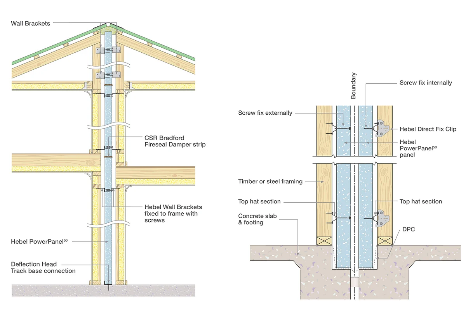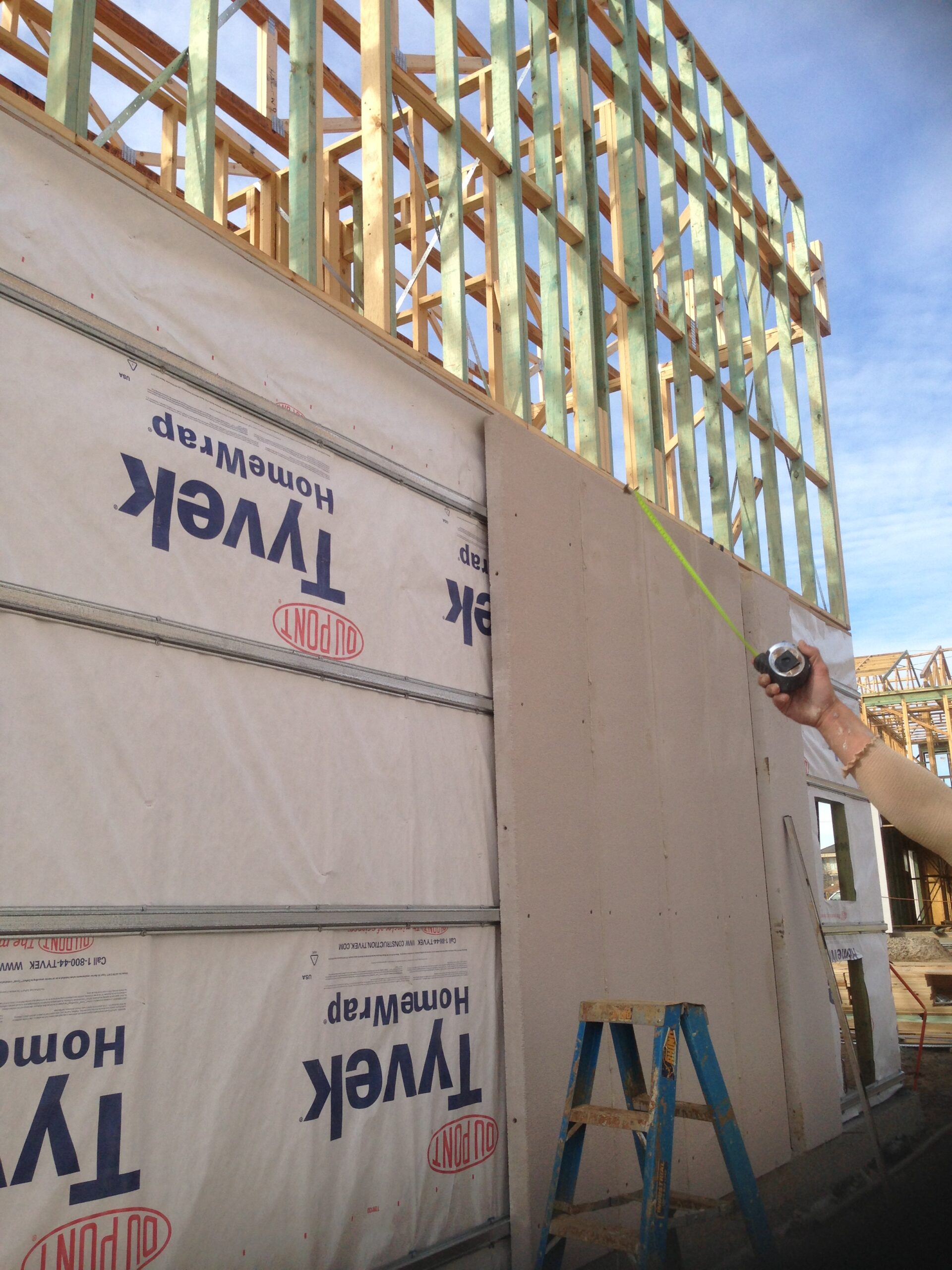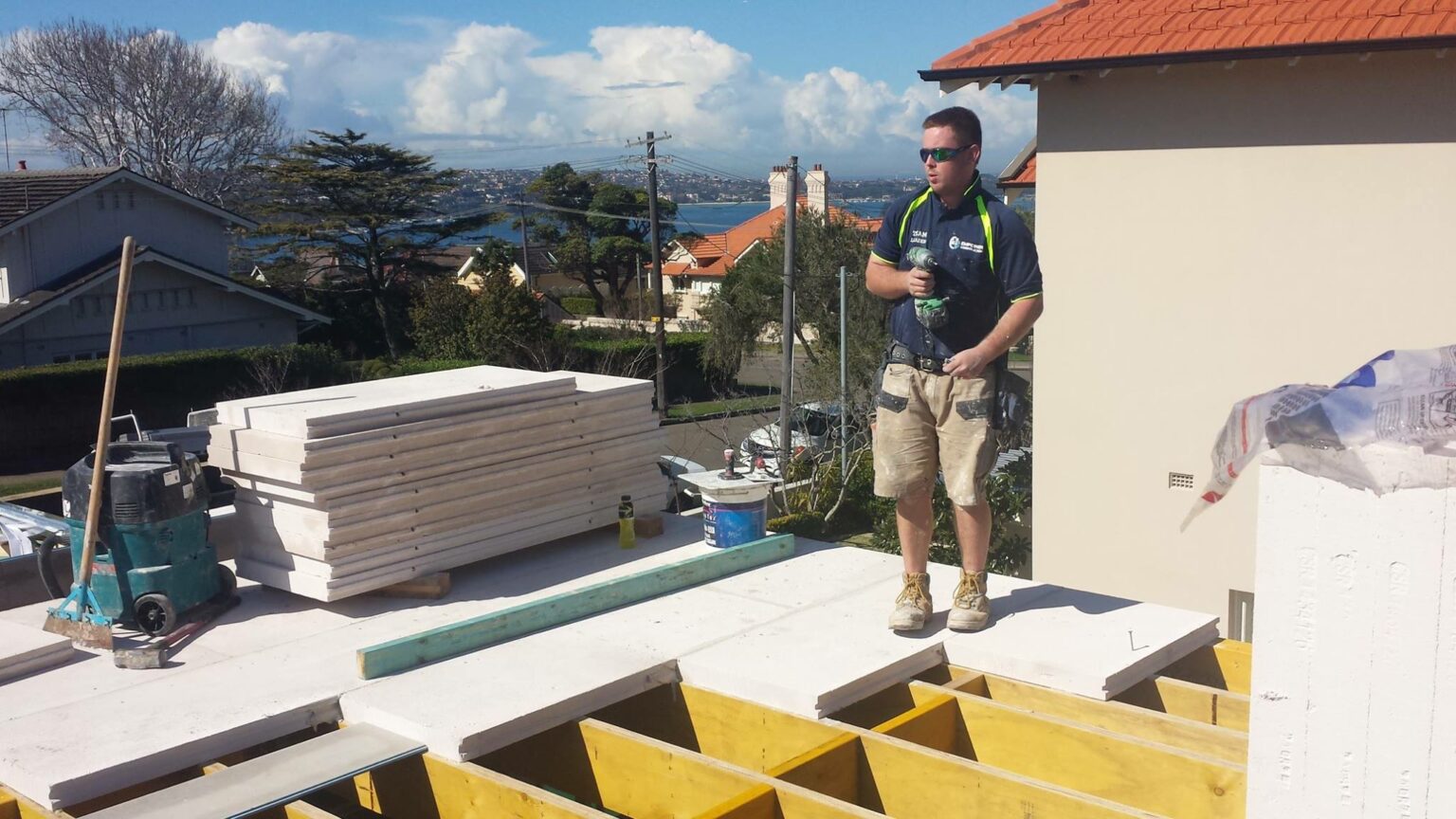External wall cladding plays an important role in the overall aesthetics of your home. Not only this, but it also protects your home from the harsh extremes of the Australian weather, enhancing thermal and sound insulation. With the number of cladding options on the market, including Hebel, brick, timber, weatherboard, natural stone, metal, and concrete, the possibilities can often be overwhelming.
Empower Construction is here to help!
In this article, we cover all the basics to help you pick the right cladding solution for you.
What is Cladding?
Cladding is the application or overlay of a specific material onto the outer structure of a building, creating a protective outer “skin”. Acting as an external, non-loadbearing layer affixed to walls, the primary function of cladding is to shield the building from water infiltration and the detrimental impacts of varying weather conditions. Beyond this, it can also help with sound insulation, thermal efficiencies, and fire resistance.
Your choice of cladding plays a huge role in determining its performance, cost, and aesthetic value.
While there are many material options for cladding, each one has its pros and cons.
Different Types of Cladding
Brick Cladding
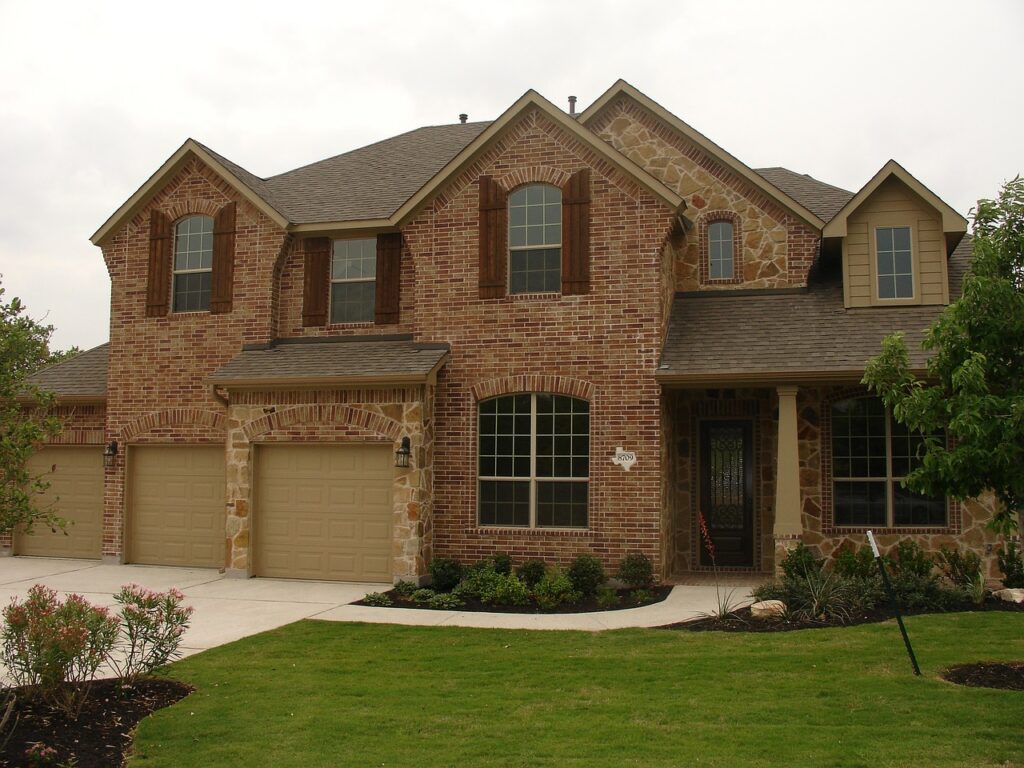
Brick cladding is a popular choice for Australians. Brick is low-maintenance, cost-effective, practical, and perfect for hotter climates, withstanding the effects of weather and the environment.
For a brick alternative with a similar appearance to brick, brick veneer is a popular choice amongst designers and builders, as it is lightweight and easy to install compared to other materials such as wood. It also has a high insulation capacity and is durable which makes it an ideal choice for cladding.
However, the downside to installing brick and brick veneer cladding is that it is time-consuming and labour-intensive to install (which means higher labour costs), and it has weep holes, which can often cause the elements to penetrate.
For a cost-effective alternative, Hebel offers a great alternative to brick cladding. There are many differences between Hebel and Brick Cladding and they both have their benefits.
Hebel

Hebel remains one of our favourite products, and for good reason. The benefits of Hebel are vast, including quick installation, energy efficiency, and high performance. These strong, versatile, and solid Hebel panels are fixed to the frame of your building and assist in the construction of the façade, sides, and rear external walls. Hebel is fortified with an anti-corrosion steel reinforcement that helps maintain its solidity, making it a reliable and robust building material for external walls and a range of construction applications. There have been many debates on whether Hebel is higher or lower maintenance than brick, and both have their advantages and disadvantages.
Timber and Weatherboard Cladding
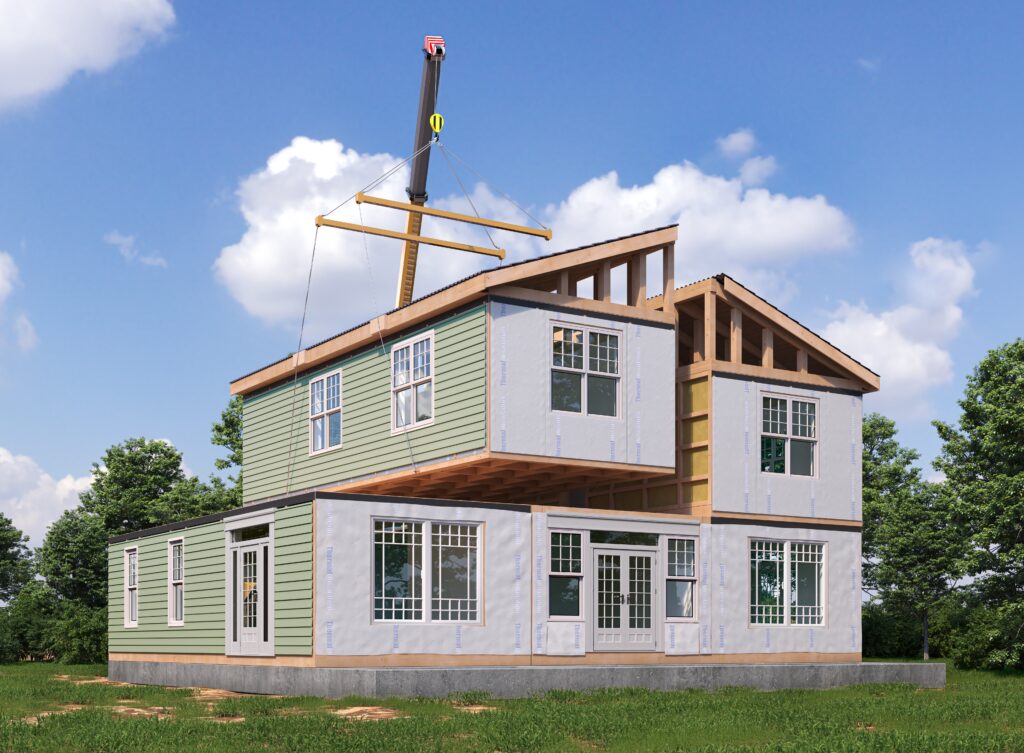
Originally, weatherboard cladding was made from timber, nowadays it is made from various materials that are combined with timber, fibre cement, and steel. This type of cladding offers a modern aesthetic with an elegant appeal. Compared to other cladding options, timber and weatherboard require minimal effort to install and provide a clean and tidy appearance. They are durable and can withstand severe weather changes like strong winds and rain. However, the risk of pest damage poses a big threat to timber and weatherboard cladding. If unaddressed termites can cause expensive repairs or a complete restoration.
Fibre Cement Cladding
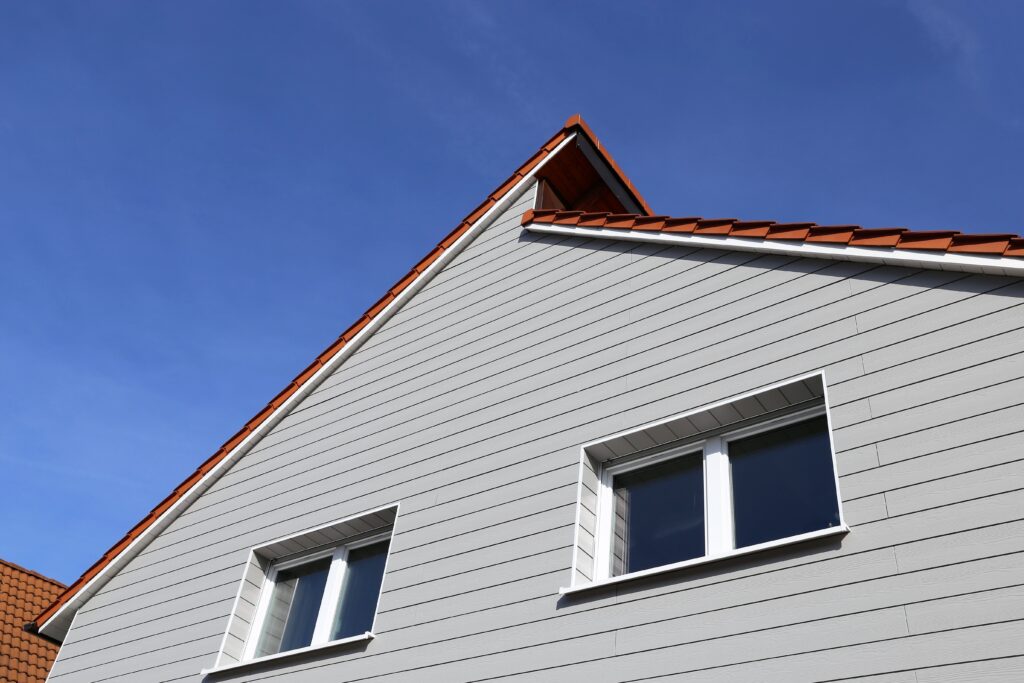
For years, Australian builders have utilised fibre cement as a prevalent cladding choice. Crafted from a blend of sand, cement, and cellulose fibre, it boasts an assortment of colours and design options. However, although it is water resistant, fibre cement cladding is not completely impervious to moisture. If not properly sealed and maintained, the material can absorb water, leading to potential issues such as mould growth, warping, and deterioration. This is especially concerning in wet or humid climates. Over time, the material may require repainting or resealing to maintain its appearance and protect it from weathering. If maintenance is neglected, the cladding can start to deteriorate. While fibre cement cladding is generally more affordable than natural stone or certain other cladding materials, it can still be more expensive than traditional siding options like vinyl or wood. The initial material and installation costs can add up, especially for large projects.
Natural Stone Cladding

There are a few types of natural stone cladding available in Australia, such as granite, limestone, and quartzite. The benefit of using natural stone is that it provides great insulation and thermal performance, which helps reduce the carbon footprint homes have by being energy efficient. Stones not only offer moisture resistance and durability, but they also provide a natural look with that rustic touch. Natural stone cladding, while offering numerous benefits, also comes with its fair share of drawbacks. Natural stone cladding can be quite expensive compared to other cladding materials. The initial cost includes not only the materials themselves but also the labour required for proper installation.
Improper installation can lead to issues such as uneven surfaces, water penetration, and even detachment of the stone over time. Some types of natural stone are more prone to weathering and deterioration when exposed to harsh environmental conditions, which can affect the appearance and structural integrity of the stone over time. The complexity of the installation process can lead to longer project timelines as well. Natural stone is heavy and may require additional structural support to ensure the building can bear the load of the stone cladding. This can also add to the overall construction cost.
Natural stone cladding provides minimal insulation value compared to some other cladding materials. Additional insulation may be required to meet energy efficiency standards, which can add to the overall project cost.
Before choosing natural stone cladding, it’s important to carefully consider these cons alongside the benefits to determine if it’s the right choice for your specific project.
Metal Cladding
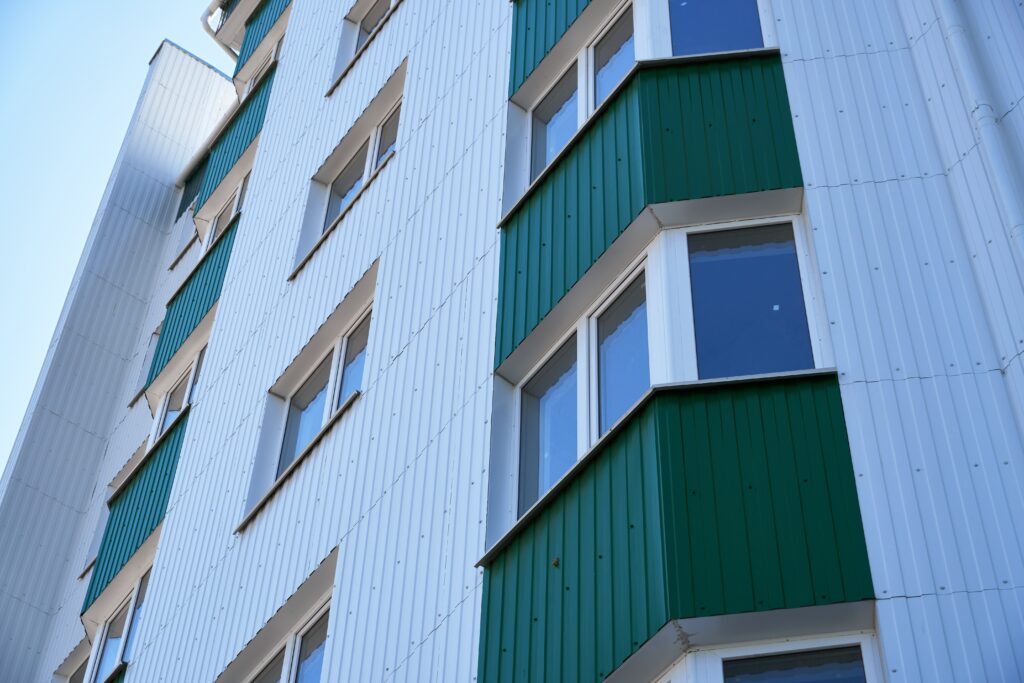
Metal claddings are widely popular, as they are known to be the most robust and reliable. Aluminium and steel are two of the most well-known types, providing different options for those looking at metal. Aluminium claddings are affordable but slightly more susceptible to weather damage compared to steel, which is more durable yet expensive.
When talking about metal cladding, it is important to check the fire resistance of both materials, as some concerns were raised regarding the fire risk of aluminium cladding. Metal cladding materials, such as aluminium or steel, can be relatively expensive compared to other cladding options like vinyl or fibre cement. The cost includes both the material itself and the installation, which may require skilled labour and specialized equipment. Certain metals used for cladding, such as steel, are prone to corrosion and rust when exposed to moisture and harsh environmental conditions. Without proper protective coatings and maintenance, the appearance and integrity of the cladding can be compromised over time.
Metal is a highly conductive material, meaning it can transfer heat and cold more easily compared to other cladding materials. Without proper insulation, metal cladding can contribute to temperature fluctuations within the building, impacting energy efficiency. Metal cladding can transmit external noises, such as rain, hail, or even street noise, more effectively than some other cladding materials. This can lead to increased interior noise levels, potentially affecting the comfort of occupants. Metal cladding can expand and contract significantly due to temperature fluctuations. Without proper design considerations and allowances for movement, this thermal expansion and contraction can lead to buckling, warping, and other structural issues. The production of metal cladding materials can have environmental impacts, including energy consumption and greenhouse gas emissions. The disposal of metal cladding at the end of its life cycle can also raise recycling and waste management concerns.
Concrete Cladding

Versatile and durable, concrete claddings are widely popular in usage for both residential and industrial projects. Concrete offers a lightweight option with an affordable installation price. They are bushfire, decay, and termite resistant, making it a popular choice amongst Australians. Concrete is also a great choice for energy efficiency which helps to reduce the carbon footprint, hence being better for the environment. The material is also budget-friendly, compared to other cladding options, making it a great choice for personal usage. A popular type of concrete cladding is Hebel, known for its strength and versatility, Hebel is a great cladding option for those looking to invest in concrete claddings.
What is The Most Popular Cladding in Australia
One of the most popular cladding options in Australia is brick, as it is the most common and durable material you can find available for cladding purposes. Due to its versatile usage, brick is mostly known to be the best cladding option thus far. However, brick cladding could be expensive and time-consuming to install, which is why other options such as concrete work well when you are looking for something just as durable yet budget-friendly. A popular autoclaved aerated concrete option is Hebel. Hebel is strong, versatile, high-performance, and popular due to its easy installation process. If you’re new to the construction industry, you may not have heard about Hebel. But as expert Hebel installers in Sydney, our favourite go-to for our building projects is Hebel and for good reason.
How Do I Choose the Right Cladding?
There are a plethora of excellent options when considering the right choice for your external cladding. Each material of cladding has its own benefits and drawbacks. Having a clear idea of what you want and considering these pros and cons, the climate you are in, and your budget will help narrow down the many cladding options.
Still need help narrowing down your options? Contact us today.
As independent specialists, we work with a range of leading suppliers of construction materials. We have a thorough understanding of the characteristics and performance capabilities of each product and can advise on the best choice or mix of products to deliver the outcome you’re seeking.
At Empower Construction, we consider the ultimate building material that will deliver the best result for your project and design. We are committed to building strong, cost-efficient, and beautiful places throughout Australia.
We are experts in external wall solutions, with more than 15 years of experience advising on, managing, supplying, and installing all types of external wall cladding, facades and finishes.
We work with our clients during the design and planning stages of a project to provide tips and tricks we’ve picked up along the way of Hebel and other lightweight cladding installations. We are residential construction problem solvers and can assist with product selection and specification, compliance, and workflow management (and more) to meet budgets and maximise design outcomes.
We are a one-stop shop for your external walls, offering a wide range of high-quality lightweight cladding solutions, render, paint and more. As independent specialists, we work with a range of leading suppliers of construction materials. We have a thorough understanding of the characteristics and performance capabilities of each product and can advise on the best choice or mix of products to deliver the outcome you’re seeking.
We provide an extensive range of CSR Hebel installation services, including External Walls, Intertenancy Walls, Zero Boundary Walls, Powerflooring, Bush fire-compliant systems, and more. Over the years, we’ve tried and tested new and innovative lightweight building materials, selecting only the highest quality products to add to our range. Our products and services are warranted, code-marked and compliant with Australian standards and building regulations.
Contact us to find out more about our Hebel installation services or our other lightweight cladding solutions.



